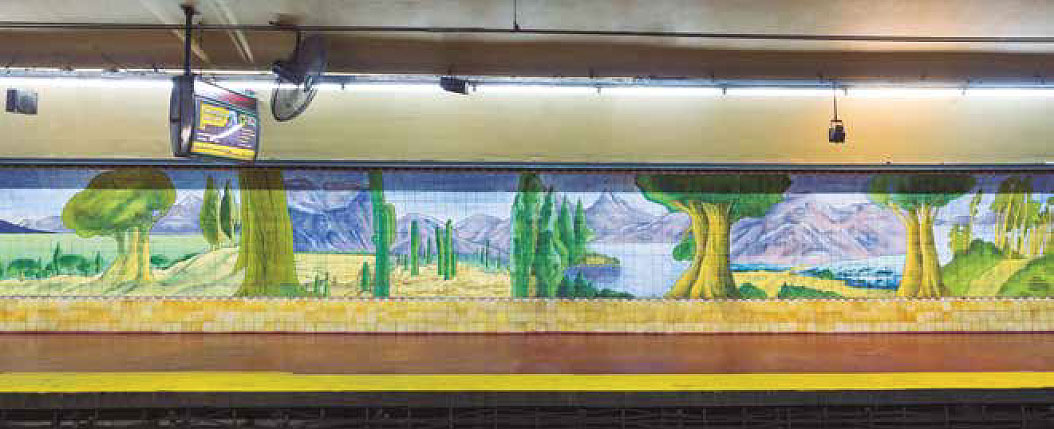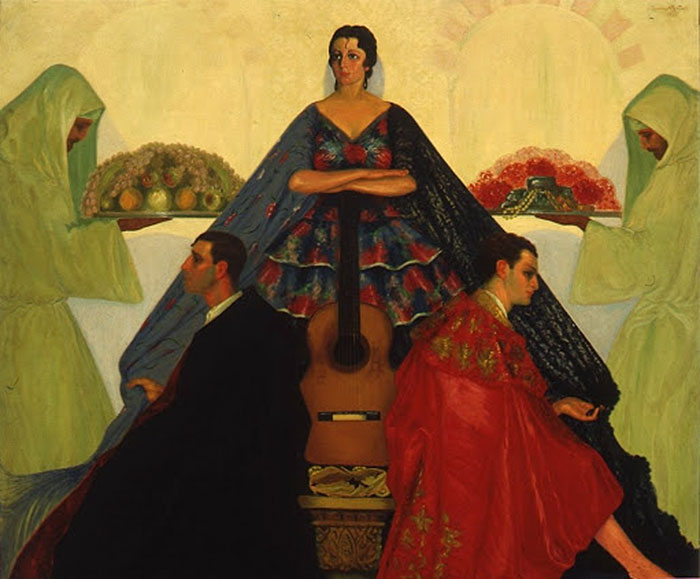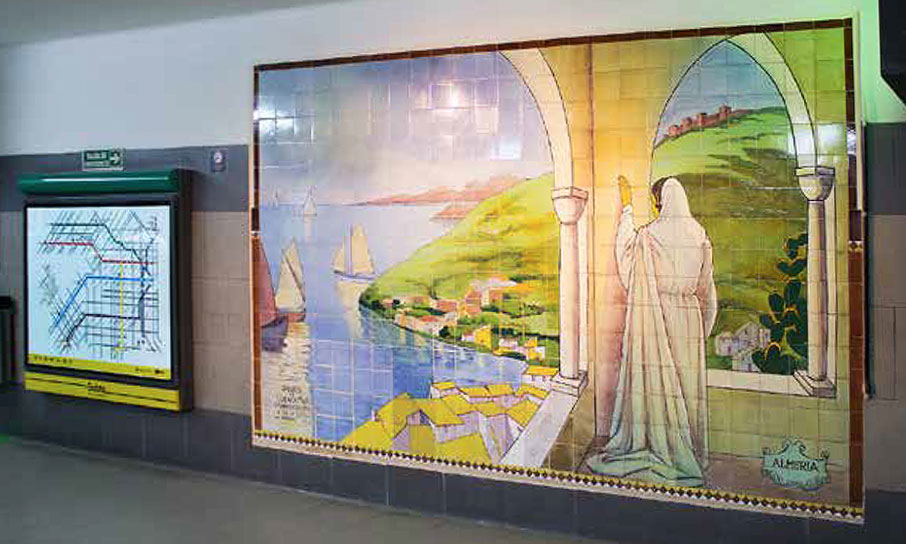Buenos Aires underground or metro (the “subte”, short for “subterráneo” which literary means underground, for its residents,) was and still is more of an Argentinian ceramic museum. There are murals in every station, and not only ceramic, sculptures, paintings, stained glass, mosaics, etc., too. For instance, D line was long ago declared an Historical National Monument for its murals. And they come in all shapes and themes. There are murals dedicated to Mafalda, Gardel, Maradonna and even Messi.
Since 1910, when the line was first inaugurated, ceramic murals have been dressing the walls of each station, a true distinguishing feature of the city and a wonderful spectacle for anyone to see.
Then, Line C goes by the popular name of “La línea de los españoles” (“The Spaniards line”) for the themes of its murals that depict the most important cities of Spain. Plus, from the potter’s workshop of Triana, in Seville, and Zuloaga, in Segovia, came the ceramic murals that dress the stations of this C line –that was also built with Spanish money.
This is not, however, the only evidence of Spanish artists within the gigantic underground museum. A Córdoba artist, Rafael Cuenca Muñoz, in the 1930’s, decorated two stations of Buenos Aires subte. His designs were then carried out by the ceramist company Cattaneo and Cia., and has been recently restored.

“Views of the Pichincha river in Ecuador” mural in line E.
The station of Palermo holds in its hall a 3,6 x 2,2 meters mural based on a sketch made by Rafael Cuenca Muñoz in 1934, also carried out by the company Cattaneo and Cia. in Buenos Aires. The title of the mural is “La espera” (“The waiting”) and, set in Almería, depicts a woman bidding farewell to a ship in the harbor. A clear reference to the tragedy of emigration and exile. http://www.buenosaires.gob.ar/subte/galeria/linead
Also, two big drawings made by Rafael were then transformed into murals for the Pichincha station. They go by the name of Views to the Pichincha river in Ecuador I and II and recreate the landscape of the Andes that surround the magnificent Pichincha volcano.

“Spanish allegory” by Rafael Cuenca Muñoz.
Rafael Cuenca Muñoz (Córdoba, 1894 – idem, 1967) belongs to a generation of painters in a way eclipsed by the figure of Julio Romero de Torres. He was granted a scholarship by the Diputación to study in the Academy of Fine Arts of San Fernando in Madrid. Later, and in a short period of time, he became the director of the Academy of Fine Arts of Albacete. Above all he was a painter especially gifted to do portraits. And he was successful in several exhibition in Madrid and Bilbao.
During the 1920’s Cuenca Muñoz, already director, worked as a professor in the Academy of Fine Arts of Albacete. Albacete is a small city, and in the year 1924 the first issue of the Centauro magazine, of which he was editor, director and owner. It was a magazine weekly issued and it covered art, literature, sports, bullfighting, much in these days’ fashion. Later on, he moved to Huelva, where he worked as cartoonist for numerous newspapers and magazines, showing his talents and satirical skills. Meanwhile he continued painting.
In May of 1932, the Unión Iberoamericana organized an exhibition of his work in Madrid. During the month of November his paintings were also exhibited in Bilbao, in the Carlton Hotel halls. He worked a lot and produced many paintings and was also able to exhibit them during those years. In 1934, in the first four months of that year, his work is exhibited in three different exhibitions in Madrid, including the Circle of Fine Arts, where seventy of his paintings, mostly portraits of women and children, but also men, still life and nudes. That same year an exposition is organized in the Círculo de la Amistad in Córdoba as part of an cultural program by the Town Hall.
After the Spanish Civil War, Muñoz Cuenca and his wife Rocío went into exile to Argentina. There his painting gained a more costumbrist approach. Women are almost the only them in the painter’s work. Ladies, dancers, gypsies, invade his paintings, and his work would be sincerely appreciated in numerous American Republics. He did not neglect his portraits, because of them he is constantly hired; he portrayed the Argentinian high society. He also painted landscapes, always with the old country in his heart. Nostalgia, finally, at the end of his life, made him come back. He died where he was once born in 1967.
A catalogue of his works, as of today, are exhibited in Buenos Aires subte stations, in case you want to take a look. It is definitely worth your time.
http://cdn2.buenosaires.gob.ar/subte/libro_de_arte_subte_version_web.pdf

